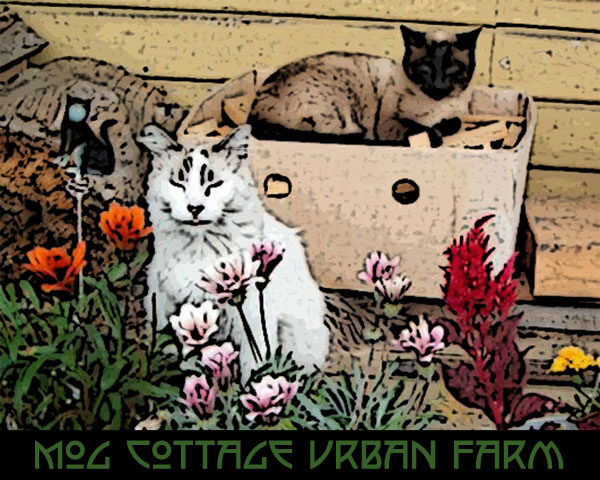 We finally got our parking permit. It only took 4 months of haggling. It ended by stripping down the original design to a shell of it's former self. Gone is the dog proofing fence/pea trellis. Gone is the hardscaping along the curb. Gone is the oh so potentially slippery pebble mosaic. The last argument with SDOT involved the amount of hardscaping one can install without paying the 174 pieces of silver. The guidelines for the free permit say nothing about the amount of hardscaping allowed, only that it includes it. So, SDOT arbitrarily sets the rules. In fact, after plan number 3 was faxed in with a follow-up call to the head of engineering, "Liz" (remember Liz?) stated that as soon as they receive the $174 they'll send us the permit.
We finally got our parking permit. It only took 4 months of haggling. It ended by stripping down the original design to a shell of it's former self. Gone is the dog proofing fence/pea trellis. Gone is the hardscaping along the curb. Gone is the oh so potentially slippery pebble mosaic. The last argument with SDOT involved the amount of hardscaping one can install without paying the 174 pieces of silver. The guidelines for the free permit say nothing about the amount of hardscaping allowed, only that it includes it. So, SDOT arbitrarily sets the rules. In fact, after plan number 3 was faxed in with a follow-up call to the head of engineering, "Liz" (remember Liz?) stated that as soon as they receive the $174 they'll send us the permit."But the guidelines for the free permit states that it includes hardscaping!" Roland complained.
"Oh, that only includes some hardscaping," answered "Liz." "You can install some flagstone."
So, upon faxing plan number 4, we finally received our permit. The free "Street Use" permit is 3 pages of font size 6 legalese and is best read with a jewelers loupe. It includes all sorts of things such as, terms, conditions and requirements:
- SDOT is the supreme authority who rules over your parking strip right-away and thou shall not have any property rights before us.
- Thou shall work within the requirements set forth within the Right-of-Way Improvements Manual.
- Though shall be redundant and contact SDOT with all of the previously submitted information 72 hours prior to starting work upon penalty of $300 dollars.
- Thou shall not block traffic without another expensive traffic blocking permit.
- Thou shall not damage utilities upon penalty of fines and payment for damages.
- Work performed within the public right of way shall occur in compliance with the City of Seattle Noise Control ordinance.
- Thou shall not perform work during the holiday season only in specific downtown areas that have nothing to do with your location.
- Thou shall pay our lackeys $150 per hour to come out when needed (such as when the neighborhood snitch strikes again) and inform you as to what you've done wrong in accordance to our arbitrary decision making abilities, misinformation and how anal we feel that day.
- Thou shall not bear false witness towards SDOT and if you do. . .
- Thou shall be responsible for legal fees incurred against such offense.
Blueberries like two things to grow well: acid and moist but well drained soil. I added spagmum peat moss and soil from my house up north and mixed it all together with the garden soil we brought in. The soil from my place has a pH of 5.2, perfect for blueberries, and along with the acidity and moisture holding properties of the peat, should provide a nice, cozy home for the blueberry bushes. It is important to thoroughly wet the peat down first in a bucket or wheel barrow because applied dry peat will suck all the water out of the soil and water starve any newly planted bushes. It's suprising how much water is actually needed to saturate peat. It takes a lot of stirring with a shovel along with a constantly dribbling hose, as peat looks wet on the surface until you stir it and find large dry areas.
Now, I'm perfectly aware that peat moss is not the most sustainable product, however, I only use it when absolutely needed for optimum growth of certain plants, like blueberries and heathers. This is the first bag I've purchased in probably 10 years. I've invested quite a bit of money in these bushes (even on sale), so feel justified in judicious use of certain organic soil amendments for optimal plant health.
 Future plantings along the slope of the mounds will include other edibles such as lingonberries (Vaccinium vitis-idaea) and creeping raspberries (Rubus pentalobus). I would like to plant other shrubs such as currants, space permitting. North of the flagstone is tagged for larger crops such as the zucchini (the SDOT rebellion plant, remember?), artichoke and cabbage.
Future plantings along the slope of the mounds will include other edibles such as lingonberries (Vaccinium vitis-idaea) and creeping raspberries (Rubus pentalobus). I would like to plant other shrubs such as currants, space permitting. North of the flagstone is tagged for larger crops such as the zucchini (the SDOT rebellion plant, remember?), artichoke and cabbage.I'm considering taking out the 2 raised beds on the north end in order to provide more room for these plants, but that will be next year's project. It will probably require another permit as the current one is only good for 3 months. Best to work on the Sabbath, I think.

No comments:
Post a Comment
Tell me what you think. I'd love to hear your ideas and personal experiences.